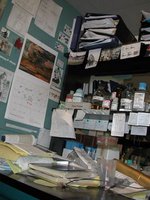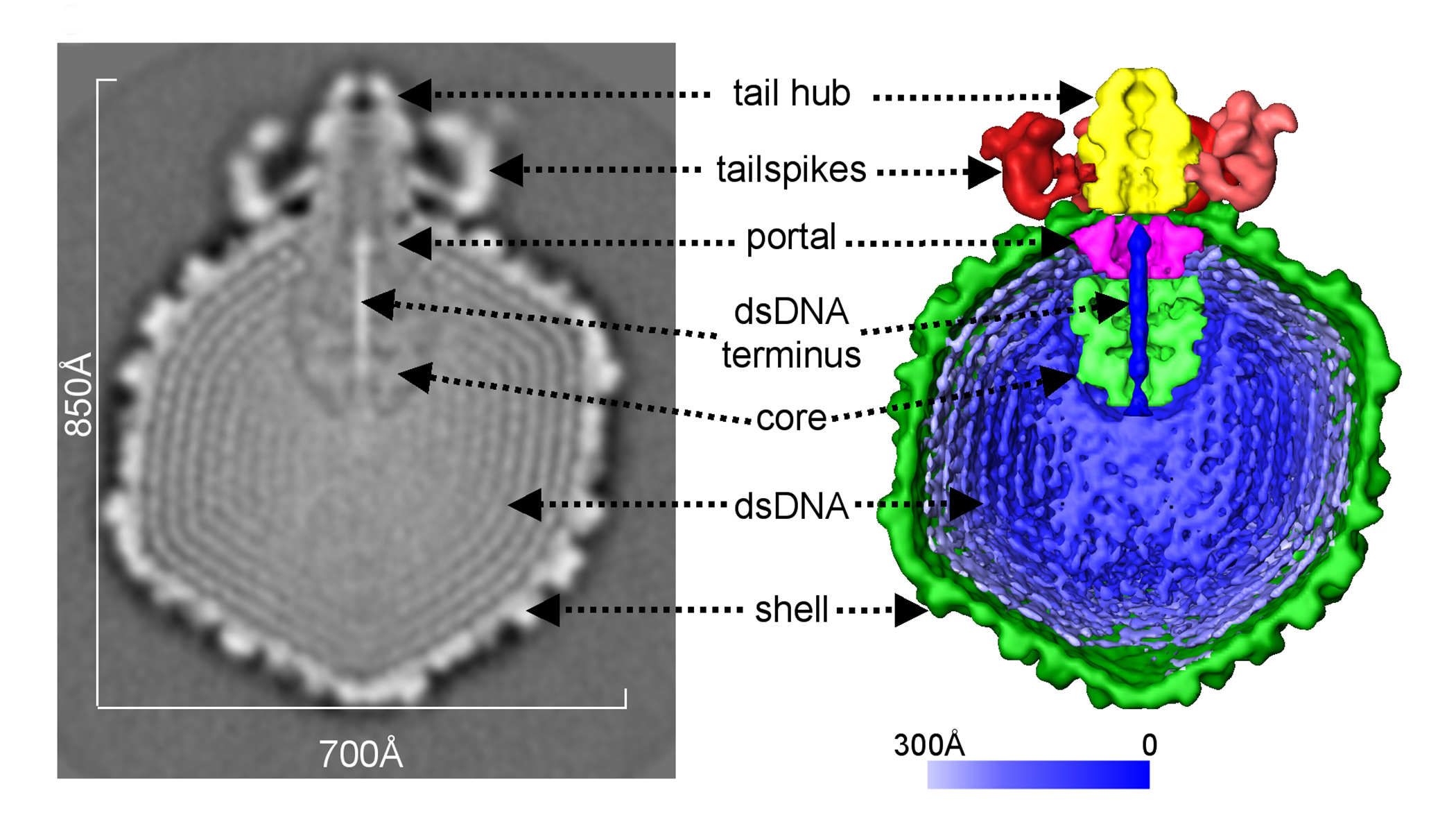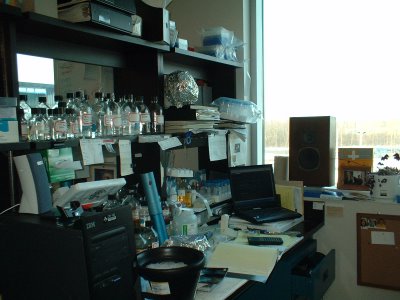Tuesday, February 28, 2006
OMFG wikipedia on your ipod!
Posted by
Anonymous Coward
at
11:52 AM
0
comments
![]()
The ethics of clinical trial outsourcing
 Great article in wired talking about big pharmas using poor indians as guinea pigs. Those that have seen the movie "Constant Gardener" know what i'm talking about here. It's so expensive to test drugs in the west and poeple don't like signing up to clinical trial, and so places like india are very attractive. The people are treatment naive, and they don't really have a choice, since they could not afford the standard treatment anyways, and are very trusting of doctors. The governement looks away because there is cash to be made. It's a free for all. Yet the (honest) doctors there are starting to feel uneasy about what goes on "The biggest problems around here are snakebite and insecticide poisoning [...] we could really use a trial for one of those.". I also want to point out this great site about science in developing countries.
Great article in wired talking about big pharmas using poor indians as guinea pigs. Those that have seen the movie "Constant Gardener" know what i'm talking about here. It's so expensive to test drugs in the west and poeple don't like signing up to clinical trial, and so places like india are very attractive. The people are treatment naive, and they don't really have a choice, since they could not afford the standard treatment anyways, and are very trusting of doctors. The governement looks away because there is cash to be made. It's a free for all. Yet the (honest) doctors there are starting to feel uneasy about what goes on "The biggest problems around here are snakebite and insecticide poisoning [...] we could really use a trial for one of those.". I also want to point out this great site about science in developing countries.
Posted by
Anonymous Coward
at
11:06 AM
0
comments
![]()
Monday, February 27, 2006
Trivia Night
Posted by
Anonymous Coward
at
5:31 PM
0
comments
![]()
Sunday, February 26, 2006
Nonrandom chromatid distribution in embryonic stem cells
 As we suspected, the asymetric division of a stem cell makes sure the older chromatid is retained to minimise accumulation of errors. This reminded me of some work not that long ago about aging in bacteria, and in yeast. Does asymmetric division underly culture immortality ? If so, the stem cell hypothesis of cancer has to be true. With more and more labs looking for those stem cells it has become evident that they exist in certain cases, but I am unconvinced for the majority of cancers. Am I the only one who can grow cells to confluence starting from just one? High error rates and rampant replication give more variation for natural selection to work on and this is the very essence of cancer. If there is only a small pool of cancer stem cell to begin, then variation is severly limited. And in a solid tumour, shouldn't those cells get stuck in the middle, where necrosis gradualy takes over? I just don't buy it.
As we suspected, the asymetric division of a stem cell makes sure the older chromatid is retained to minimise accumulation of errors. This reminded me of some work not that long ago about aging in bacteria, and in yeast. Does asymmetric division underly culture immortality ? If so, the stem cell hypothesis of cancer has to be true. With more and more labs looking for those stem cells it has become evident that they exist in certain cases, but I am unconvinced for the majority of cancers. Am I the only one who can grow cells to confluence starting from just one? High error rates and rampant replication give more variation for natural selection to work on and this is the very essence of cancer. If there is only a small pool of cancer stem cell to begin, then variation is severly limited. And in a solid tumour, shouldn't those cells get stuck in the middle, where necrosis gradualy takes over? I just don't buy it.
Posted by
Anonymous Coward
at
11:35 PM
2
comments
![]()
Students filling the holes in Iraq reporting
Posted by
Bayman
at
11:28 PM
0
comments
![]()
Friday, February 24, 2006
Monday, February 20, 2006
Got bench?



If you are messy, dirty or love mold we need you
for the first annual bench competition. It’s
easy, all you need is to not clean up, which is
probably already the case, take a picture and
send it to us at labbenches@hotmail.com. Our
expert panel of judges will evaluate different
criteria such as artistic display (e.g. colourful
spills), technical difficulty (e.g. high pile-up
of paper), and creative use of lab material. The
highest scoring individual will be crown
king/Queen for a year, which is sure to
bench-press your labmates. Entries will be shown
on bayblab.blogspot.com, the official CMM/BMI
science Blog of the 3rd floor cancer center. Good
luck and may the benchiest scientist win.
Posted by
Anonymous Coward
at
2:23 PM
0
comments
![]()
Friday, February 17, 2006
who invented DNA?
Posted by
Anonymous Coward
at
3:56 PM
1 comments
![]()
Surgeons hooked on opium and rats at raves - Oh my

These recent findings might explain why the morphine from the chemical bench always seems to find its way into James' bench drawers. Also amusing research, apparently loud music worsen (or enhances?) effects of ecstasy in rats. In other news my nudes want weed and Cypress Hill.
Posted by
Anonymous Coward
at
1:00 PM
0
comments
![]()
Monday, February 13, 2006
A scientist's guide to creationism
part1: Scientist can be very hard-headed. They use certain things you might not be familiar with for logical deductions. Facts are things you can find in books. You might want to refrain from quoting the bible, as scientists do not like old litterature. Thankfully most scientist do not actually check the litterature that is quoted. I suggest you start with something like "A coat hanger is 44 inches long if straightened". It is best to quote another scientist and the year to sound more authoritative. For example " in 2005, a team of nobel laureates from Cambridge conducted a comprehensive meta-analysis of coat hangers and found that on average they are 112cm long for the typical north american caucasian male". Notice the switch to the metric system. Throw in a lot of facts quickly and you will confuse the scientist and he will think you have read a lot of these books.
part2: Scientist use a specific kind of jargon. Scientist mistrust laymen's terms. You want to show you can also use big words and can talk the talk. Current favorites include nanotechnology, ontology, somatic, agonist, lordosis. Pepper your talk with them and you will destabilise the poor little scientist.
part 3: Now that you have him where you want him, it's time to bring out the big guns. Figures. Scientist often only pay attention to figures so you want to use a lot of them. Try to use them in a logical order to build your case.
 Here we can clearly see that one should believe either in intelligent design or creationism. Because really who want to be the blue guy.
Here we can clearly see that one should believe either in intelligent design or creationism. Because really who want to be the blue guy. Furthermore, the "theory" of evolution does not make sense. A wookie? It does not make sense.
Furthermore, the "theory" of evolution does not make sense. A wookie? It does not make sense.part 4: Finish him with statistics. Scientist trust statistics. Mostly because they do not understand them. It's a known fact that 95% of biologist suck in math. Say something like "a paired non-parametric quadruple ANOVA assuming a gaussian distribution combined with a bose-einstein post test gives us p<0.0000000000001.

Here we can clearly see that God has very small error bars.
Conclusion: Here the scientist expects some kind of model. So in conclusion we conclude that God made stuff.

Posted by
Anonymous Coward
at
9:05 PM
4
comments
![]()
More on the OHRI "Salary Scandal"
All in all, I feel that the $17k stipend + tuition waiver that most students at the Univeristy of Ottawa recieve is more than fair. With it, we can easily pay for basic living expenses while living a life filled with learning, discussion, high (and low) -tech lab toys, and the occaisional social event of the century. Indeed, as others have recently pointed out, at the OHRI we enjoy some of the most generous stipends of any grad students at the U of O. Apparently some students at the core BMI deparment studying in poorly funded labs recieve even less and certainly those in most other disciplines, such as the Arts, recieve little or no stipend.
What's disappointing is that while the hundreds of the U of O's most brilliant and able students, technicians, post-doctoral fellows and senior scientists who actually do the research at the OHRI selflessly dedicate years of their lives solely for (in Worton's words) "the love of science and the desire to expand knowledge in the hope that it will improve the health of people everywhere", it seems that a handful of individuals making up the OHRI leadership are dedicated to "improving the health of people everywhere" while getting rich.
You can bet that Ron Worton believes in the humanitarian and scientific value of what he's doing, it's obvious from all he accomplished during a long and distinguished career in muscular dystrophy research. But he also has other reasons to be at the OHRI - 280,220 of them to be exact. That was his 2004 salary, $280,219.99 +$26,146.57 in taxable benefits (info's available through the Ontario Government's Salary Disclousure Act). His salary has nearly doubled since he was named CEO of the OHRI (he pulled down a more reasonable $158,446.36 + $553.56 in benefits in 1999). Another OHRI administrator, Michel Chretien, younger brother of former Prime Minister Jean, pulled down a cool $245,416.60 + $31,646.94 in benefits in 2004 in his position as Program Director, Diseases of Aging. Rashmi Kothari, Worton's Associate Director, gets another $123,000 from OHRI coffers. So these 3 guys alone are pulling down a total of just over $700,000, meaning that 1.4% of the OHRI's $74M publicly-funded budget goes straight into their pockets. Another way of looking at it is that the combined salaries of these three could fund 41 graduate student researchers, which is about 1/5 the number currently working in OHRI labs.
One of the major focuses of the OHRI is producing advances in biotechnology and in subsequently commercializing their medical applications. This is happening as we speak; research currently being done by U of O researchers produces 25 invention disclosures, 10 patents and 3-5 licensing agreements per year for the OHRI. The biotech sector being in its infancy, you can bet this number is only going to increase. The primary aim of commercializing research in this way is to produce future profits. In the case of profits emerging from research done at the OHRI, these belong to the OHRI, which means Ron Worton and his board decide what to do with them. So with economists predicting the biotech sector to yield trillions of dollars in commercial revenues from North American markets alone, you can except these guys to get even more ridiculously rich as the work done by OHRI researchers past, present and future is exploited commercially.
It's a beautiful thing that so many of Canada's brightest students, post-docs, tech and senior scientists are willing to put in long hours at the lab to further medical science for the benefit of all society, asking for little more than basic living expenses in return. To dwell on the selfish actions of a powerful few within our institute in a sense detracts from the amazing goals we are all working toward together. On the other hand, it also seems important that we remain attentive to the actions of those have the power to corrupt such an important public institution, for such corruption could one day undermine all of our efforts and accomplishments.
Posted by
Bayman
at
7:01 PM
0
comments
![]()
IA updates
Some highlights:
Google China - censorific
EFF - I'm thinking about donating. They do some awesome things.
Cell phone tracking
And in the fun stuff - shower shock. caffinated soap.
Posted by
Rob
at
12:53 PM
0
comments
![]()
Are graduate students exploited?

The article mentionned in the previous post has raised a lot of controversy around here. First off a bunch of students have complained to the dean of graduate studies about Valerie Wallace's comment that PIs employ an army of graduate student because they are cheap. Some have taken offense at this as it implies that we are no more than cheap labour. Then this morning we received a letter from the director of the OHRI, basically apologising if anyone had taken offense, and stating that this quote was taken out of context. But then he adds that we do science for the love of it and basically that we shouldn't bite the hand that feeds us. I wont publish the letter because it isn't public, but that's the general idea. We also know that some guidelines will be implemented regarding the salary scales which will be made public. Unfortunately those remain guidelines and wont be inforced. What do students think about all this? I have been listening around the lab to get the answer. First off today is a holiday across the OHRI but students aren't alowed to take the day off which may add to the general negative feeling. I think the consensus is that graduate students should make at least minimum wage and that most of us are struggling because we live often away from home, we have to pay tuition and we get on average around $17K. If we do get a scholarship it doesn't get "added" to our salary it just saves money for our PI. Considering graduate students are indeed the ones carrying the bulk of the research, shouldn't they be valued more? What is our worth to society? For the average person in the street it would come as a surprise that we make such little money considering the education level and sheer amount of work done. Then again what we produce has very little monetary value on average, especially in the short term. Do the products of my research have the economic worth of the scholarship I have received from public money? Is it better to pay a few graduate students a lot or pay little money to a lot of people? At the end of the day, if people are willing to do the work things aren't likely to change. Indeed the love for science is a poweful thing, but it doesn't buy us rent, and smart poeple are turned off research because they don't want to be poor for the rest of their lives. I personally feel very fortunate of my condition but find it depressing that my friends fresh out of school in business or engineering make more money then I will ever with a phD. And to even have a chance at making it we need an unreasonable amount of productivity. No wonder that some desperate scientist resort to cheating. I want to know what you think is a reasonable pay or what you think of this controversy in the comments section ...
Posted by
Anonymous Coward
at
11:09 AM
1 comments
![]()
Thursday, February 09, 2006
Mr. T says: pity the fool who does graduate studies
Posted by
Anonymous Coward
at
1:52 PM
0
comments
![]()
Nature News Blog
Posted by
Bayman
at
1:29 PM
1 comments
![]()
Tuesday, February 07, 2006
You guys are no match

Ok so my bench isn't as bad as it usually is, because I haven't done anything on it since I last cleaned it. Right off the top, you know it's the coolest because it has a Burton sticker. On the top right you can see a TC-hood heavy duty fan. I kept it because it works straight from the AC plug, and it's fast and silent. Maybe for a future PC mod that can grow cells, I dunno. On the top left is my pet plant. I don't have a name for it, but it has been around living on my bench with only water for over 2 years now. It's like a grad student I reckon. I'm impressed that it has survived this long. Oh and if you have been wondering, trypan blue does not stain leaves, it stops at the roots and stops them from growing. the Picasso at the bottom is an artistic rendering of mouse internal anatomy. 200 points if you can identify the large and small omentum on it...
Posted by
Anonymous Coward
at
4:00 PM
0
comments
![]()
Monday, February 06, 2006
Ampulex compressa
Posted by
Rob
at
9:48 AM
2
comments
![]()
Sunday, February 05, 2006
Benji, MD; Curious George, PhD
 Seeing as how we've been bayblabbing on topics like ESP and animal behaviour lately, get a load of this Globe and Mail piece on medical prescience in dogs. The most intriguing anecdote is about an epileptic girl whose dog warns her of impending seizures several times each day, giving her time to get in a safe position and avoid injury. Apparently this is fairly common; in one study 15% of families with an epileptic member reported that their pets could anticipate seizures before they occurred.
Seeing as how we've been bayblabbing on topics like ESP and animal behaviour lately, get a load of this Globe and Mail piece on medical prescience in dogs. The most intriguing anecdote is about an epileptic girl whose dog warns her of impending seizures several times each day, giving her time to get in a safe position and avoid injury. Apparently this is fairly common; in one study 15% of families with an epileptic member reported that their pets could anticipate seizures before they occurred.In cancer research, we all know that early detection is the key to effective treatment. Can (wo)man's best bud diagnose cancer too? A group from California reports that they could train Lab Retrievers and Portuguese Water Dogs to accurately diagnose cancer by sniffing a patient's breath. They argue that the dogs are responding to cancer-specific chemicals emitted in the patient's breath, but it is not clear from this report whether the dogs are indeed responding to such chemicals or those induced by radiation or chemotherapy. Even if dogs truly can detect cancer, it remains to be seen whether they can do so before the disease is picked up by conventional diagnostic technology. But of course the most important question of all...is this diagnostic training heritable...???
 In entertainment, Hollywood is finally paying tribute to the
In entertainment, Hollywood is finally paying tribute to the original explorer-scientist primate...check out the trailer for the upcoming Curious George flick.
original explorer-scientist primate...check out the trailer for the upcoming Curious George flick.The soundtrack, done by Jack Johnson with a little Ben Harper, is fun too.
Posted by
Bayman
at
11:14 PM
0
comments
![]()
Viral pornography

Some baymembers would probably be enticed by this, as no doubt they fantasize about peering under the viral coat quite frequently. Thankfully I have no such perversion as my research only involves female genitals. Scientist at Purdue have found a way to use software to gain extra resolution, giving us an incredible look at these targeted self-replicating reverse-enginneered nano bullets.
Posted by
Anonymous Coward
at
12:50 PM
2
comments
![]()
Saturday, February 04, 2006
Friday, February 03, 2006
More on Infectious Cancer in the Devil
 I was intrigued to learn more about the evidence for this allograft theory of tumor spread mentioned in the Coward's most interesting post. I came across a nature news article, and the original Nature paper just out proposing that the cancer is transmitted from devil to devil as an infectious allograft. So far only the abstract is available, but it seems there are basically two lines of evidence supporting the theory:
I was intrigued to learn more about the evidence for this allograft theory of tumor spread mentioned in the Coward's most interesting post. I came across a nature news article, and the original Nature paper just out proposing that the cancer is transmitted from devil to devil as an infectious allograft. So far only the abstract is available, but it seems there are basically two lines of evidence supporting the theory:1. The tumors of all animals studied showed identical chromosome rearrangements (not too surprising considering their physical signs of disease were identical and cancer is a genetic disease...).
2. The animals often fight and bite each other in the face.
To me the evidence seems quite indirect at best. An alternative interpretation of the findings, for example, could be that the facial tumors are caused by an initiating mutation that leads to a defect in chromsome segregation during mitosis. Such a defect could result in the observed loss of the certain chromosomes and the observerd rearrangements in daughter cells. But we should probably all stop biting each other just as a precautionary measure.
PS - You can now get the paper.
Posted by
Bayman
at
10:45 AM
0
comments
![]()
Thursday, February 02, 2006
The benchiest

You think you got bench? Check out that mad aluminum ball and the right speaker pumping out the baytunes.
Posted by
Rob
at
3:35 PM
0
comments
![]()
Wednesday, February 01, 2006
Canadian Research $$$$$$$
Posted by
Bayman
at
11:33 PM
0
comments
![]()
Transmittable cancer?
Posted by
Anonymous Coward
at
4:53 PM
0
comments
![]()


 Podcast
Podcast




0 comments:
Post a Comment